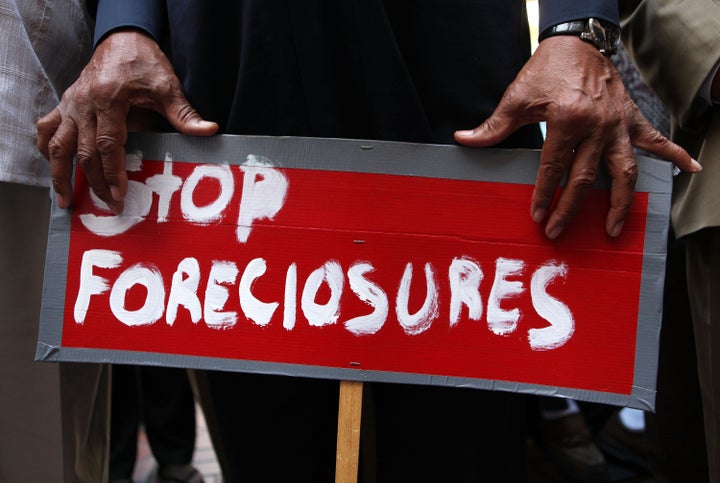
Its signature foreclosure-prevention plan having definitively failed to actually help very many homeowners, the Obama administration today announced its new strategy to get balky lenders to the table: Nagging.
The U.S. government will start to publicly identify those companies that are failing to give troubled homeowners permanent loan modifications, and hound them daily to monitor their progress, the Treasury Department declared.
Top servicers will be required to submit a schedule demonstrating their plans to reach a decision on each loan for which they have documentation and to communicate either a modification agreement or denial letter to those borrowers. Treasury/Fannie Mae "account liaisons" are being assigned to these servicers and will follow up daily as necessary to monitor progress against the servicer's plan. Daily progress will be aggregated by the end of each business day and reported to the Administration.
The Home Affordable Modification Program (HAMP) was launched in March to much fanfare as the administration's main response to a growing foreclosure problem. The government would provide cash incentives to mortgage servicers that reduced monthly payments for distressed homeowners, and that way those who were facing higher payments or lower incomes could stay in their homes.
But the program, which the administration refers to as "a primary focus of financial stability efforts," has been a disaster according to consumer advocates, economists, housing experts and government watchdogs. It does nothing for those who have lost their jobs, because they have too little income to qualify, and could make things even worse in the long run for those homeowners who owe more on their mortgage than their homes are worth, because the plan does not require principal reductions.
Furthermore, only a tiny proportion of the relatively few homeowners in the program have obtained permanent relief. As of Sept. 1, only 1,711 homeowners, or less than two percent of those who received a temporary modification under Obama's plan, ended up with a permanent fix, according to a report by the Elizabeth Warren-led Congressional Oversight Panel.
And yet, the plan has cost taxpayers about $27 billion so far.
Meanwhile, as many as 3.4 million homes are expected to enter foreclosure by year's end, with some experts estimating that next year will be even worse.
The administration's latest push -- shaming the mortgage companies -- is "certainly a step forward after six months of operation," says Alan White, a law professor at Valparaiso University who has written extensively on mortgages and foreclosures. "But it's not going to help by itself."
"It's a long-overdue step," he said. "At this point, the servicers are propped up in [many] different ways by the taxpayer -- HAMP isn't the only subsidy they're getting -- and if we're going to prop them up then they ought to achieve our public policy objective."
The four big banks are also the biggest servicers, he noted, and American taxpayers are the majority shareholders in three of them: Bank of America, Citigroup and Wells Fargo. "He who pays the piper should call the tune."
Others were even more critical. "The Obama administration's latest adjustments to its nine-month-old foreclosure prevention program do little but highlight the continued failure of lenders' voluntary efforts to stop the foreclosure crisis," Michael Calhoun, president of the Center for Responsible Lending (CRL), a consumer-advocacy group, said in a statement.
Consumers advocates have long said that the program is poorly managed and relies too heavily on mortgage servicers, whose interests are not necessarily aligned with those of homeowners. Economists and advocates point to principal reduction, for example, as perhaps the best way to achieve a permanent, sustainable modification. Lowering the total amount due -- particularly for those homeowners with negative equity -- could induce homeowners to keep up with their payments and stay in their homes.
But most servicers and banks are loath to reduce principal, particularly for those mortgages that have been securitized. Also, servicers' fees are based on the overall balance of the loan, so if the balance of the loan is reduced, then so are their fees.'
In the administration's plan, the servicers essentially call the shots, rather than the investors -- and yet they still don't want to participate.
One reason is that reducing the principal forces banks to recognize the losses on those loans. By not reducing the principal, the banks can essentially pretend that the loans may one day become current again. It's an accounting trick, consumer advocates say.
Yale economist John Geanakoplos is among those arguing that principal reduction is the best way to reduce foreclosures. By contrast, the administration simply requires that homeowners' monthly payments be lowered, which can happen either through an interest rate reduction, or by lengthening the term of the loan. If a bank turns a 30-year mortgage into a 40-year mortgage, for instance, the homeowner could see the monthly payments drop -- but with 10 years of extra interest, would actually end up owing more.
